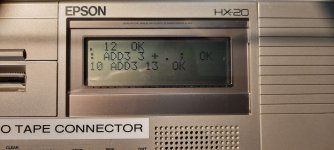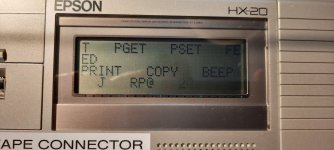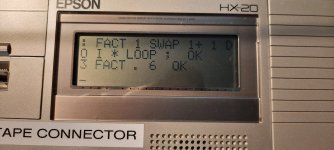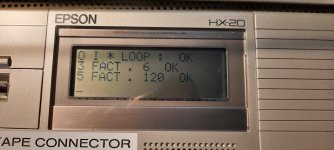Forth is a fascinating language. I've got a number of versions. It's not a great deal of use for the main things I need to write programs for, but it's by far the most interesting to play with.
All the definitions (words) within the system are linked, this is part of the structure that allows the system to find the word it needs. The structure starts at the end of the file, and each word is linked to the previous word. The system knows which is the last word, but if you try to do something with the raw file (i.e. not using forth) then it's a little more problematic, but once you've got the last word you can link through from there.
The word to list the whole vocabulary (in this case) is VLIST, but in other implementations it might be WORDS. If you do VLIST here, then the first word to list is 2*, and if you use a hex editor on the binary file then you can see 2* on the last page, but there is some binary stuff after that and I'm not sure what that it just now. The next word to list is MOD, and that's the word immed previous to 2*. There may be code definitions within the structure that do not have names, but that's one of the complications, for example the data immed before BEEP has a fair bit of code but no visible names. Each definition has a header before the active code, which will include a code for the type of word, also the address of the next word up, and the address of the active code in this definition. So 2* links up to MOD, which in turn links up to the previous word WIND (re the cassette drive) and so on. Fun! The last part of each definition is usually common to all, and is the link to NEXT, which returns from processing this word and proceeds to the next word in the higher level.
It would be quite possible to create a prog that will look through the complete system and look for any use of suspect links, i.e. that might not work in the currest situation. Prob best to work out the address of the last (first) word in the chain manually mind you. This address is prob defined in forth, as this is needed for properly adding new definitions to the chain, but if you're not actually using forth, the process may need some help.
Pity that you don't get this much help when looking through a screen of machine code!
By the way, I've got some definitions worked out from years ago regarding some 'disassembly' of FORTH definitions - this worked very well on the HX, although it was better to display on the printer. I copied the code from a magazine back 198?, made a few adjustments to suit the words available in this FORTH, and got it working. I think I've got a photocopy of the magazine article as well somwehere, which explains everything.
Geoff





